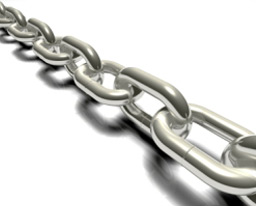How to Optimize the Internal Linking of Your Website
Among the various strategies for organic search engine optimization is internal linking (also referred to as “cross linking”). When done logically and accurately, internal linking can improve both the search engine performance and usability of a website.
 Contrary to internal cross linking, external linking is executed between two different domains or websites. Search engines like Google pass value and keyword relevancy based on the terms used in the external link’s anchor text (or “link text”).
Contrary to internal cross linking, external linking is executed between two different domains or websites. Search engines like Google pass value and keyword relevancy based on the terms used in the external link’s anchor text (or “link text”).
A majority of the efforts in organic SEO are in external linking, where SEO companies acquire links from other related websites. Furthermore, these “backlinks” are optimized by including keyword-specific anchor text for which the website has been optimized for.
Although external linking between separate domains is the dominant factor to achieve higher search engine rankings, internal cross linking within the domain can also help to improve a website’s search engine optimization for targeted keyphrases.
Build Logical Links with Relevant Context
The content of your pages offers a number of opportunities to pass link juice to other pages of your website. The first phase in developing your cross linking strategy involves going through the various pages of your website to see pinpoint where it is most logical to build links to other relevant pages. When performing this analysis, it is important to have the mind-set of an actual user (and not simply a Google bot).
When building internal cross links, it is not only crucial to connect relevant pages, but also to build links within relevant blocks of content on the page. The most effective links (for both internal and external link building strategies) are contextual links, or links embedded in the copy of the content.
Contextual links are ideal because they are surrounded by text that relates to the link and thus the link’s anchor text. This is an important link building concept that search engine spiders take into great consideration when determining the quality of your links.
Use Keyword Optimized Anchor Text
The anchor text or link text you use when building internal links also plays a pivotal role in how well your strategy pans out. Be sure to use targeted keywords that you would like the destination page to rank for. In many cases you can be flexible and not always use the entire exact phrase matching of your primary keyword phase of the destination page. Sometimes taking the “partial linking” approach (where only some keywords are used in the anchor text) is a suitable alternative.
As you are executing your website’s internal linking strategy, it is also important to ensure that the destination page of the cross link includes (or is optimized for) the given anchor text. By this we mean it is crucial to have the targeted keywords in webpage’s Title, Meta Description, and visible body copy. From a search engine standpoint, it also helps to surround keywords in the body copy with Strong tags to increase keyword relevancy of the page.
In short, linking is most effective when the words used in the link’s anchor text also show up in the various areas of destination page. In some cases, you may want to edit the copy around your internal links to improve the keyword relevancy and overall organic search engine value.
The advantages of internal cross linking can be beneficial for user interaction as well. Internal links help to funnel users to the content they are truly looking for on your website. Additionally, these cross linking strategies can help to promote better search engine rankings, and can sometime generate double-stack listings (two pages shown of the same domain) in the organic search results, which is double the search engine exposure.
This article written by Tyler Tafelsky, one of our SEO & Website Optimization Specialists here at Web Presence Group.
Visit Tyler on Google+



